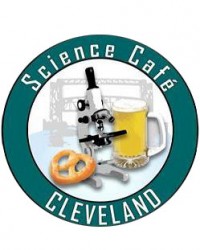 The moon is not only Earth’s nearest neighbor in the solar system, but it also is similar enough to Earth in many aspects of its chemical composition to be a virtual twin. One striking difference, however, is the near total lack of water on the moon.
The moon is not only Earth’s nearest neighbor in the solar system, but it also is similar enough to Earth in many aspects of its chemical composition to be a virtual twin. One striking difference, however, is the near total lack of water on the moon.
The Apollo missions of the early 1970s looked hard for indigenous hydrous components in materials gathered from the lunar surface and found none. Forty years later, evidence began to emerge that the moon is not quite as dry as it appears.
At the next Science Café Cleveland event, James A. Van Orman, professor in the Department of Earth, Environmental and Planetary Sciences, will discuss hydrogen found in lunar volcanic glass beads by a small research team of which he was a part; ice frozen in craters at the moon’s south pole, where the water came from; and what it may mean for the moon’s origin and evolution.
The discussion, titled “Water on the Moon,” will take place on Monday, Nov. 10, in the Tasting Room at Great Lakes Brewing Co. (2701 Carroll Ave., Cleveland). Doors will be open from 5:30 to 9 p.m. The discussion will begin around 7 p.m.
The Tasting Room will also host a limited menu before and during the event. Those interested in attending are advised to arrive early, as some cafes have reached capacity. A chairlift is available by request.
The Case Western Reserve chapter of Sigma Xi, WCPN ideastream and the Great Lakes Brewing Co. sponsor Science Café Cleveland.
Learn more at case.edu/affil/sigmaxi/.
